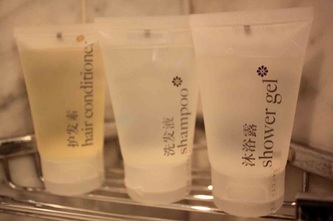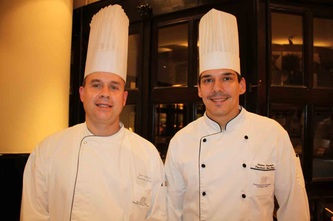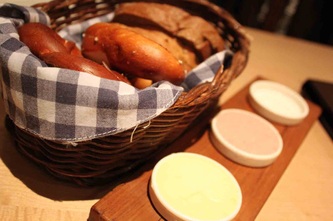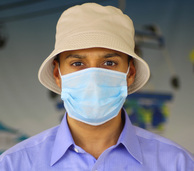|
I have always wondered what the Lufthansa Centre in Beijing is all about. I have been to Beijing many times but never got the chance to go and have a look at this widely talked about building. ‘Lufthansa Centre? In Beijing?’ naturally such questions were constantly being popped up in my mind. So finally, earlier this year I had a chance to go and see the famous area. Apart from being popular for being the China Headquarters for Lufthansa German Airlines, this building, which is owned by the Lufthansa Group, is also well known for the 20-year old award-winning Kempinski Hotel Beijing. The location could not have been any better as its located only around 40 minutes away from the airport by taxi, and around a similar time by the metro. The airport express train is only a one-station hop away from the Lufthansa Centre. The lavish lobby is one of the few in Beijing that provides natural light to enter the foyer through the huge glass roof. It’s marvellous décor is complete with mahogany, teak, as well as expensive designer leather sofas. Able to accommodate up to 1,200 people, the hotel possesses 526 well appointed guestrooms and suites, including 4 executive floors. The hotel was built to highlight the best of German hospitality and to make it home away from home for German and Swiss executives coming to Beijing for a business trip. Indeed, because of the hotel’s close proximity to the foreign embassies, and airline offices, so therefore it makes sense that most of the guests are diplomats and other similar professionals. Which is one of the key reasons why the hotel has been the crew base for Swiss International Airlines, and Lufthansa German Airlines. However, it can be safely said that the hotel’s rooms seem to have seen their hey days in yesteryear. The ambiance, the smell, and general aroma has faded in time, and it’s clear to see. Of course, there is that flair of elegance. The rooms themselves decor appear to have been renovated but it all looks ancient compared to the sheer modernity of the newer 5-star hotels that are cropping up in Beijing and other cities in China. The staff are very tentative and caring, and it’s not their fault if things don’t go well as planned. I had to change my room as the one I was offered smelt of cigarettes- now that was surprising as the hotel is meant to be smoking free. The beds are comfortable, which is perhaps the most important thing about any hotel. On saying this, the hotel’s management are doing a splendid job in making sure that the quality of the Kempinski brand is kept going strong, and especially with the challenges that they are facing in the booming hospitality industry in China. All of the rooms have modern amenities such as a master control box, which allows you to switch on or off the electricity, call for the concierge, and even control the television from the comfort of your bed. Then there is wireless internet, and Kempinski’s own branded amenities. The views are not all that great from the windows, and what’s makes it challenge is the myriad of high rise building erupting around the hotel that block the beautiful skyline which guests in the early days used to enjoy from their rooms. The mini-bar is well stocked, and contains German, and Swiss goodies such as Ricola, and Weis Schwarzwalder Kiefch Waffee. The crème of the hotel are its superb food & beverage outlets. There are a total of seven distinctive restaurants and bars offering everything including traditional German cuisine at the much loved Paulaner Bräuhaus, Japanese cuisine at Honzen, Dragon Place for Chinese cuisine, and even Italian cuisine at the Trattoria la Gondola. The thing that differentiates the Kempinski Beijing from all the others is that this is one of the few hotels in China that offers something else apart from just a typical Italian, Chinese or Japanese cuisine because that’s what all the other luxurious hotels in the market offer. Those with a sweet tooth would love the Kempi Deli, an award-winning German style delicatessen and coffee bar offering home favourites such as ‘schokokuchen mit kirschen (chocolate chip cake with cherries)’. It’s well worth a visit. Paulaner Bräuhaus at the Kempinski Beijing Located in the beautiful gardens of the 20-year old Kempinski Hotel in Beijing, the Paulaner Bräuhaus, which is as old as the hotel itself, is configured to look like a German beer garden cum a restaurant. The whole complex is owned by the Lufthansa Group, and hence it’s name also is ‘The Lufthansa Centre’. The area is an expat haven for Germans living in Beijing. The German School of Beijing, and the German Embassy are very close too. So it’s no surprise that slap bang in the middle of it all is one of the most German restaurant’s. It’s best to book a table in advance as it does get crowded fairly quickly, and especially during the weekend and evenings.
The food is better than fine, though certainly not light, by any means. The chefs at the Paulaner do feed like there is no tomorrow. Though mainly an expat enclave, the Paulaner is actually more popular with the local folk. I would hate to generalise, however on the whole it is a fact that Chinese people adore beer, or anything to do with beer. Take China’s Snow Beer as a prime example of that. As of 2009, it is officially the best selling beer brand in the world, with annual sales of 61 million hectolitres, despite largely being sold only in China. Therefore, it is no surprise that Paulaner is doing so well with the city yuppies from across the road. Paulaner’s elegant, expensive interior, impeccable service, and regular live music add on to the attractions that this place offers. Every dinar is presented with a breadbasket containing typical German style bread rolls, and also a plate with three types of bread dressings that include butter, ham paste, and cottage cheese. The menu is purely German, with a slight hint of Austrian and Swiss cuisine. For starters, I went for the ‘linsensuppe mit frankfurter (lentil soup with frankfurter sausages cut into pieces, bacon)’. Considering that the restaurant was busy when I got there, I was surprised that the dish arrived within 4 minutes of me ordering it, and seemed to be just waiting to be served to anyone who wanted it. Equally well, I was not surprised that it was almost cold too. Now, either the chefs at the Paulaner have a remarkable talent for creating quick fire dishes, or it was made in advance and waiting in a pipeline to be served. Having a German restaurant in China would not make you feel as if you are in Germany, nevertheless, in terms of taste; I had to admit that the food was good. The staff wore the traditional German costumes, and were very friendly and assisting, but sometimes it came across as dinars had to remind them and ask for minor but important things like salt and pepper. Sticking to the German theme, I ordered a 1-litre glass of Halles beer, which sadly I did not end up finishing. I think I personally overestimated my ability to drink such large amounts of alcohol. However, more importantly of all, there was no way I could hold that massive beer glass with just one hand. Even a medium sized man like myself with an average sized hand felt like a baby holding a beer glass with two hands! But then again, I was in a German restaurant and it was all part of the good fun. If the beer was not enough to fill me up on its own, then the next dish up was nothing short of a mammoth dish to eat. The ‘regenbogenforelle müllerin art (pan-fried rainbow trout with tomatoes, lemon juice and vegetables, sour cream dill sauce)’ did not look too pleasing, as it tasted. The presentation was dull and all you could see was a sleeping fish along with a few bits and bobs of vegetables. However, as you move away the skin gently then it tends to reveal the delicious pinkish meat of the fish, which is not only a feast for the eyes but also for the cake hole. While Paulaner has branches in most of the bigger cities of China, where there is a considerably large amount of expats, the branch at the Kempinski Hotel in Beijing is the oldest and perhaps the most well-known because of its connection to the hotel and the Lufthansa centre in Beijing. |
Get in Touch:LIFE MATTERSHere I share my thoughts
and experiences during my travels, and how some things have affected my life as an expat and world traveller. Travelling is about capturing that moment in life. Every word, view and opinion on this page is that of Navjot Singh - except where indicated. The most recent is at the top. Scroll down to read the archive. Or search using CTRL+F (COMMAND + F) and enter a keyword to search the page. Just some of the stories you never heard before. The NAVJOT-SINGH.COM web blog is separate to this web site....Click blog, which may not be visible in some countries due to local firewall restrictions, so in those cases this weblog may be read. The weblog also includes some of my press trip reports- most of which are not published on the official blog because of copyright issues. The weblog also contains articles that may be associated directly with a PR trip for a country, airline or a hotel. These are PR reviews done in relations with various companies. If you are an investor or a trend watcher then you may find this website useful as investing has a lot to do with personal observations and finding the ideal trend or next big thing. The average human on the street frequently knows far more about the state of the economy than politicians, university professors, subject matter experts, and financial analysts who seldom travel, or if they do so, only from one hotel to another hotel! The pulse and vibrancy of an economy is nowhere more visible than on a country's streets. All photos and words are © Navjot Singh unless stated. Photos taken by others or by agencies are appropriately copyrighted under the respective name. No photo or word/s may be taken without the prior written permission by the author (i.e. Navjot Singh). All Rights Reserved. Archives
April 2024
Categories
All
|




















 RSS Feed
RSS Feed







